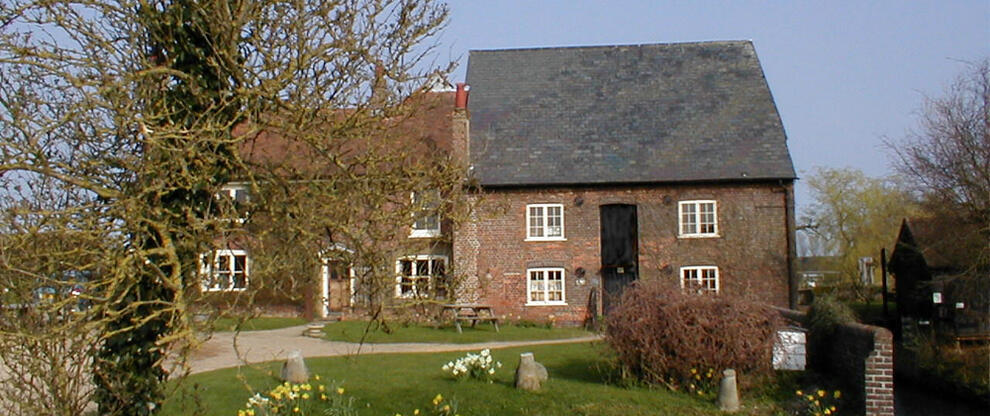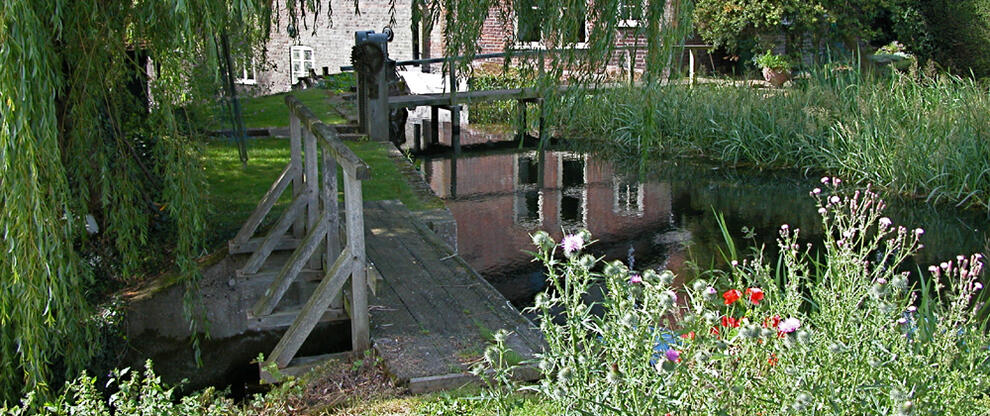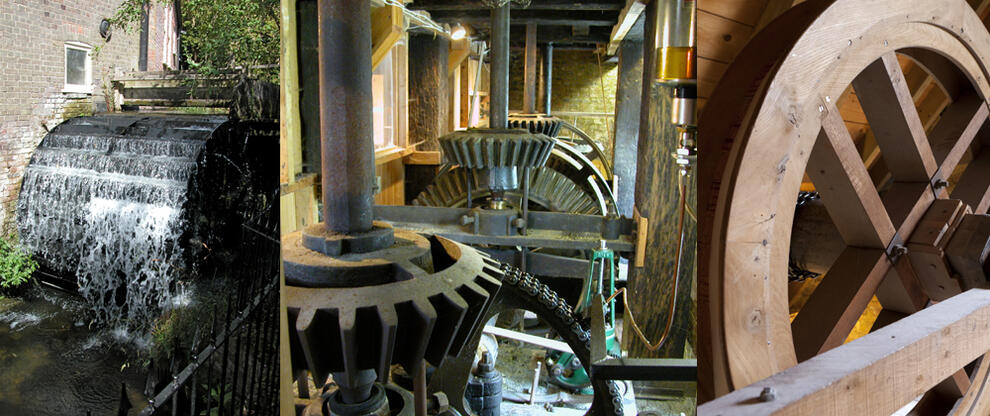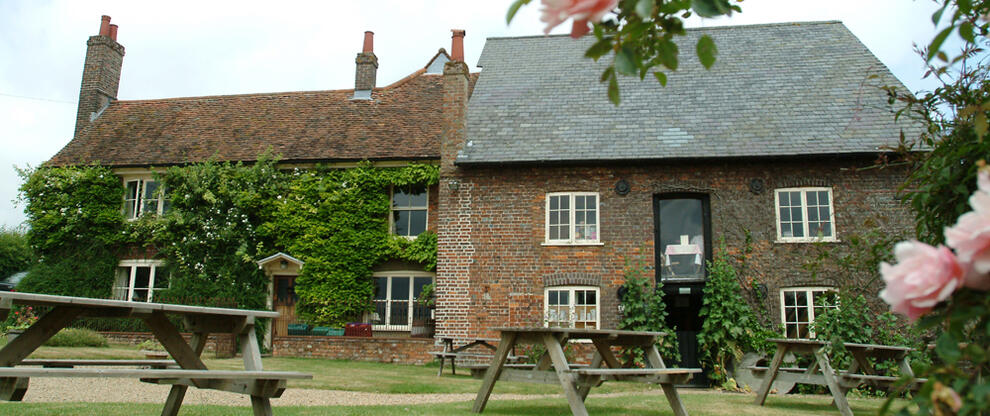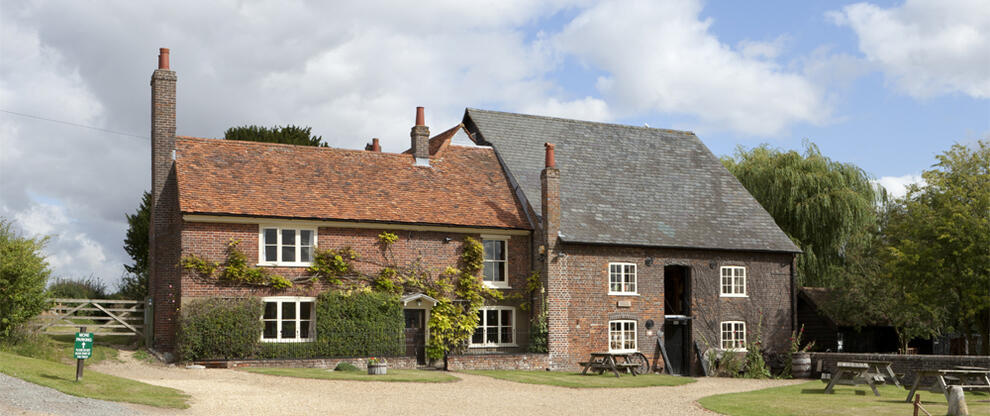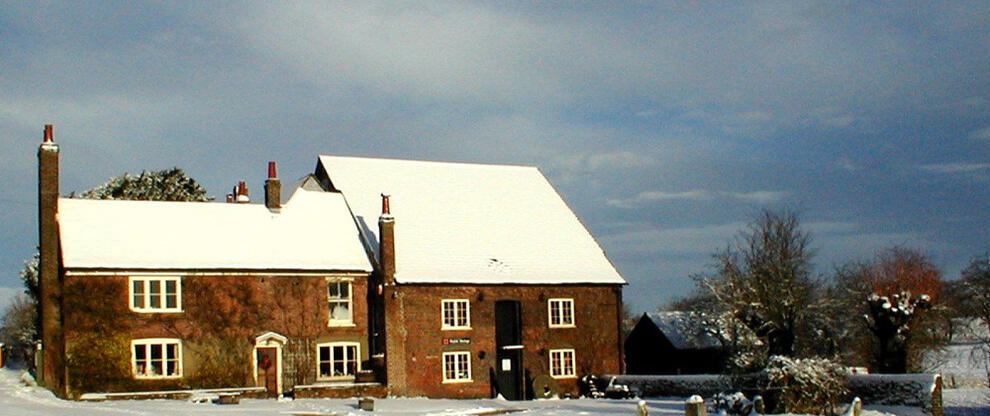History
Click here for timeline.
The buildings have no single date because the original mill has been extended at different times. There was a mill recorded possibly on this site in the Domesday Book of 1087 and the present buildings may well stand on those original foundations. Parts of the building date from the sixteenth century but much of the mill was rebuilt and extended in 1790. This can be seen on a dated brick in the south wall.
It is likely that there was a mill in Saxon Redbourn which we assume would have been part of the manor of Redbourn given to the Abbott in the time of Edward the Confessor. Whilst the original Charter is lost, there is a medieval translation showing that the local Saxon Lord, or wealthy
landowner, Aegelwyne le Swarte and his wife Wynfreda, gave the Manor of Redbourn to the Abbey of St.Albans in about 1030. The nearby Redbournbury farmhouse was his Manor Court-house, later used by the Abbot's Chamberlain.
The first surviving record of the mill after the Domesday Book was during the Abbacy of John of Wheathampstead,1290-1301, which says that "Fire entirely destroyed the Chamberlain's Mill. Fanned by an unbearable wind, the whole manor was threatened but was protected by the surrounding woods". The Chamberlain's Mill was the old name for Redbournbury Mill.
At the dissolution of the monasteries in 1539, the Abbey lands, including the mill, were seized by Henry VIII. On his death, these passed to Princess Elizabeth, later Queen. It then passed on to James I who, through the Treasury, leased the mill in trust into successive private hands.
In 1653 the mill was bought by Sir Harbottle Grimston for £200. Grimstone is the family name of the present Earls of Verulam so the mill became part of what we now know as the Gorhambury Estate. It remained in the estate until 1936 when much was sold by the 4th Earl. The Crown Estate Commissioners bought the Gorhambury Estate, thus returning the mill to Crown hands after a gap of about 350 years.
By 1841 the mill was held by Edward Hawkins, whose family continued - with only one gap - to hold the mill for the next one hundred and forty four years. Ivy Hawkins, grand-daughter of Edward, was the "only lady miller in England". She finally left the mill in 1985, aged 89, to retire to a home in Redbourn. The Crown then put the mill on the market when it was bought by the present owners.
On Ivy Hawkins' departure the Crown Estate Commissioners offered the mill for sale with a variety of possible uses. To their great credit, they accepted the only offer to restore the mill to full working order. English Heritage also offered a major grant to restore the mill, reclassifying it to Listed Grade 2*. This means that both the mill and house are protected historic buildings.
The Restoration
When the present owners bought the mill from the Crown, the mill had been unused since the 1950's. At this stage the mill was well preserved, although it did need considerable repairs. It was almost unique as a historical record of an early Victorian water-mill.
On the night of 22nd August, 1987 disaster struck. A fire broke out in the roof of the mill, only a few days after restoration work had begun. It destroyed most of the interior of the mill and much of the top floor of the house. With considerable skill and bravery the main gearing on the ground floor of the mill was saved by the fire brigade and this made rebuilding the mill possible.
With limited finance from the insurers, and a grant from English Heritage, the task of rebuilding the mill began. With the aid of photographs and the architect's drawings from before the fire, the builders pieced together the mill just as it had been - reclaiming as many of the original fire-damaged materials as possible. A millwright, Mr. David Nicholls, and his company the Chiltern Partnership, then rebuilt all the machinery in the mill. Some of the machinery was rescued from other derelict mills.
Interestingly, English Heritage required that, other than fire damaged timber, only new wood could be used. They argued that this fire was only the latest chapter in a long story; it was nearly seven hundred years since the first fire and, in coming years, they wanted visitors to be able to distinguish between the original and reconstructed parts of the building. In all nearly twelve tons of English oak, as well as six tons of softwood, were used.
The Decline Of Village Mills
Until the mid-l9th century, many villages had wind or watermills to grind flour for the community. Before Henry VIII's dissolution of the monasteries in the mid-fifteenth century, most mills were owned either by the Church or by the Lord of the Manor. Milling rights were jealously guarded, and villagers would have been allowed to grind corn only at their landlord's mill. The law at that time required flour to be ground only at your Lord's mill - known as his "Right of Soke". The miller charged up to 10% of the grain, and the landlord frequently took a further cut. There was a "peasants' revolt" in 1381 at St.Albans against the Abbot and his use of milling rights, amongst other grievances. In particular the abbot confiscated all the hand querns (hand operated flour grinding stones) and used them to line the floor of the Abbey Chapter House. All the querns were recovered!
At that time bread made with flour from English wheat was very different to that which we know today; it was very much heavier and little risen. The best milling wheat would later come from America where, because of the climate, the grain was harder and produced a stronger flour (containing a higher proportion of gluten).
After the repeal of the corn laws in 1846, plentiful supplies of American wheat became available. This gave a significant advantage to mills based near the major seaports. At about the same time, a more efficient milling process was invented in Germany; in this the grain is crushed between two steel rollers, rather than between millstones.
By the mid to late nineteenth century, many of the old mills were adding steam, gas or oil engines in an attempt to compete with their modern counterparts. They could not survive however against this early form of mass production and by the beginning of the twentieth century most were reduced to the grist milling of animal foodstuffs.
Redbournbury Mill followed this general pattern. The "new" cast-iron machinery was added in the nineteenth century. A steam engine was later added but this was scrapped for the war effort in 1915. By the time Ivy Hawkins took over the mill from her father in 1932, the mill produced only animal feeds for local farms. Some flour was produced during World War II, and Ivy stopped grist-milling in about 1958. She continued to use the waterwheel until the 1970's to power a circular saw on the first floor to cut her firewood.


